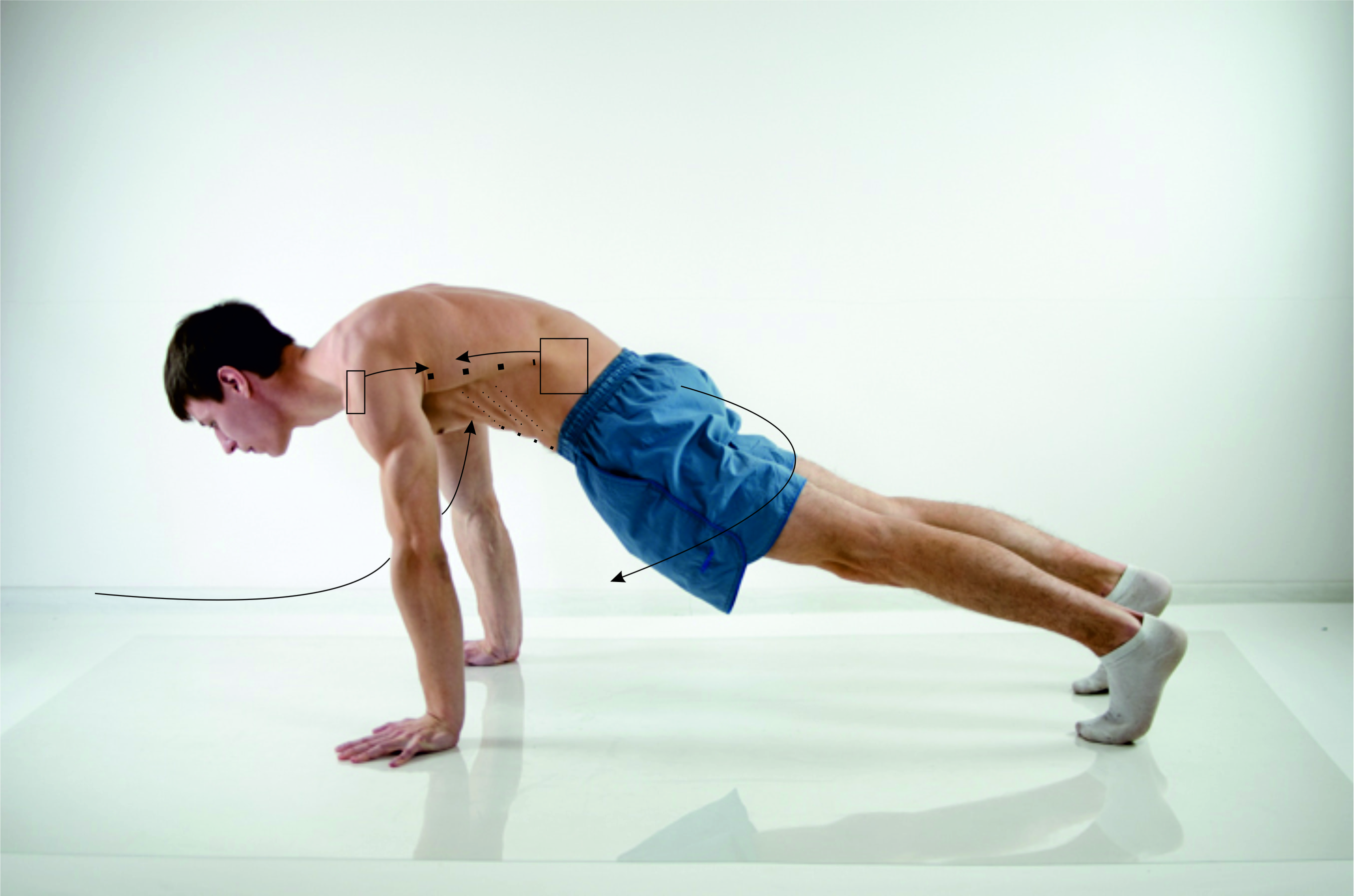Hey, guys! Artem is here and today we are going to talk about Hollow Back Position (HBP).
I already have filmed a video about planche lean where I mentioned that position multiple times. After releasing that article I received many questions like, ‘How can I understand that my HBP is correct or not?’ In this article, I will use some terms from previous articles so if you do not catch up, I recommend you to read them.
Let's start from anatomy.
What muscles form hollow back position and round our back with scapula's protraction? The first and quite obvious is trapezius muscle. To be precise, their lower and middle parts. These muscles move our scapula and actually rotate it. Second ones are the pectorals. These are muscles of the chest, which help with shoulders’ closing, help to pull them together. These two big muscles form rounding of upper back. With this stressing, you will definitely get something like this in your plank (pic.1).

Well done,
but is that correct HBP or still needs improvements? I consider that still incorrect for planche exercises and let me explain why: hollow back position is not only about rounding your upper back – it also helps to protect your shoulders and perform scapula protraction. You can reach it with stressing following muscles: lats and serratus. Look at how the position will change (pic.2).

On the next picture,
I will show you normal plank position (pic.3). On the picture 3.1, you can see the graphic explanation of the movements and what you should do to get correct HBP. Also, in comparison, you will be able to notice difference comparing to the regular position (pic.3 vs the correct HBP on the pic.3.1) On the graphic explanation you can see dashes on abs and lower serratus. These muscles will help you with posterior pelvic tilt (read more in the previous article). In addition, these muscles help to make shorter lever.


Why should we do HBP while learning planche?
First of all, this position is more effective for performing planche. Secondly, it is safer. When you do HBP your shoulders are more protected. Also, when you get confidence in planche and move to Maltese or full planche or planche push-ups, you will progress much faster. Finally, planche with HBP looks much better.
In conclusion,
HBP is formed by many muscles. These muscles protect shoulders, round upper back, help forming posterior pelvic tilt and shorten your lever. If you understand that move, you will make a giant leap towards understanding your body and will be able to use your muscles much more effectively in all kinds of levers.
Hope this article was helpful, and thank you for reading. If you want more useful info on how to learn calisthenics moves and perform it perfectly, we recommend you to check out the shop. There you can find lots of useful high-quality content and some of the blocks are even free!
Leave comments under the article if you have any problems with any exercise and you will surely get answers.
Stay strong and train smart with Calisthenics School
Artem Morozov & Calisthenics School Team


I am still confused. I don’t know how to flex my lats. Please help me. I need to achieve even straddle planche, it is my dream. I train hard every day, but I am not sure if my hollow body position is correct.
Yes, yes I mixed, protraction, my fault. What about : “Hollowes back are connected with scapula protraction and that mostly happens by contracting the pectoralis muscles and front part of your deltoid” yes, you partially right, but please read anatomy also and especially what lower part of trapezius do (it pull upper part of scapula and helps to rotate it), also you forgot about serratus which are doing main work and protract the scapula (again someone should read some anatomy).
Anyway thank you for your feedback and for checking my knowledge. Already answered on your email too.
Last thing if you know the ropes in your stuff, be patient and don’t be so rude. I always opened for discussion, hope see you here in future.
You must be kidding about this, hollowed back do not include scapula retraction, and there is no such thing as trapezius muscles-there is only ONE muscle called trapezius. Hollowes back are connected with scapula protraction and that mostly happens by contracting the pectoralis muscles and front part of your deltoid, also I suggest you to learn English before writing posts like this, and please learn some anatomy and basic movements….
It is a very a good explanation, because at the beggining i trained it like the first pic. So I need to stress serratus and lats? I am going to try, thanks!!